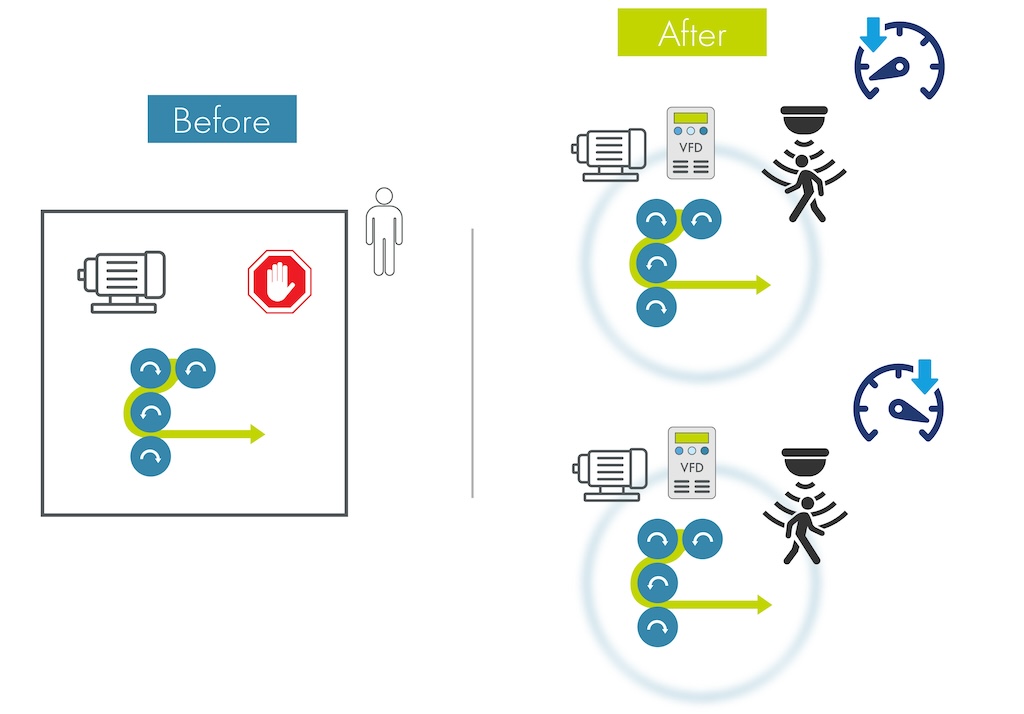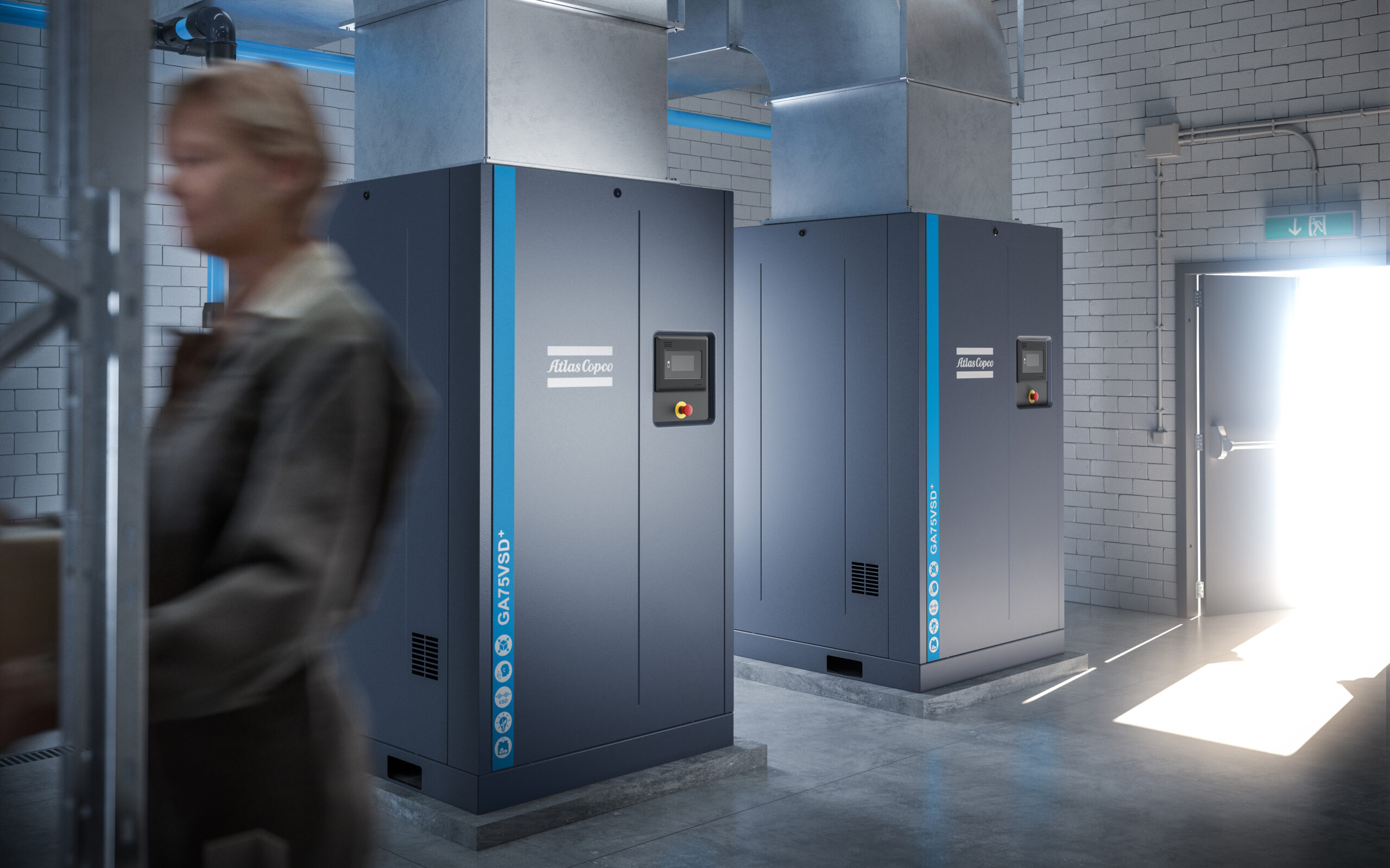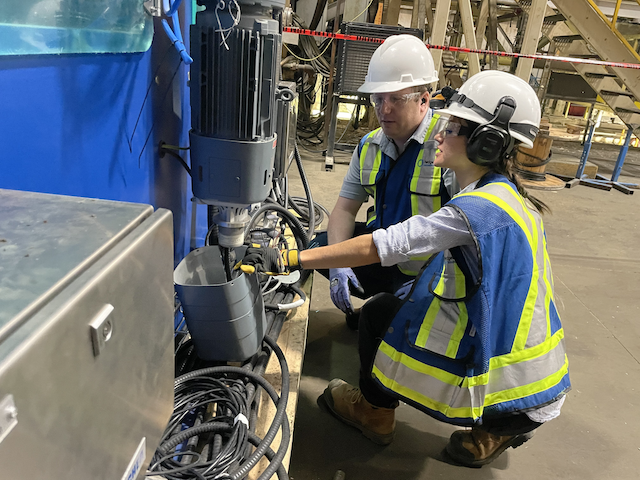Like any other type of complex industrial equipment, lift trucks can present a real challenge when it comes time to replace an existing unit or add a new one. With the seemingly endless number of models and options available, it can be a daunting process. But those who buy fork lifts on a regular basis agree that a systematic approach can ease the job and prevent mistakes.
|
Like any other type of complex industrial equipment, lift trucks can present a real challenge when it comes time to replace an existing unit or add a new one. With the seemingly endless number of models and options available, it can be a daunting process. But those who buy fork lifts on a regular basis agree that a systematic approach can ease the job and prevent mistakes.
It seems obvious that the primary concern in specifying a lift truck should be that it matches the applications it’s needed for. Yet, many trucks are purchased mainly along the lines of: “The one we have seems to do pretty well. Let’s just get another one like it.” Or, “Talk to a few of our drivers and see what they recommend.”
While driver input is important, it’s pretty far down the list of the criteria that need to be met.
Presented here, therefore, is a variety of information to help you cover all the bases and arrive at a decision that satisfies your needs. To simplify things a little, we’ve aimed at counterbalanced rider lift trucks. While most of this information also applies to other types of fork lifts, there may be additional considerations.
The following lists are a comprehensive look at factors you should define or evaluate. While they may not lead you to a specific solution, they will ensure that you have covered all the major questions and will help your truck dealer guide you to the best truck for your needs.
Basic work area considerations
Start your analysis with the physical conditions in which your truck will have to operate. If possible, project needs and conditions 3 to 5 yr ahead. Typical lift truck lives are 6 to 8 yr, but many plants are able to extend those useful lives to double that or beyond.
Particular attention needs to be given to the surfaces on which the truck will travel because of their impact on tire selection and performance, driver comfort, load jostling, and other factors.
Hazardous locations impose special requirements for EX-rated equipment.
-
Inside use
—Dock (truck, railcar loading/unloading)
—Warehouse (top rack height)
—Production
—Floor surface -
Outside use
—Concrete
—Asphalt
—Gravel
—Dirt
—Covered areas (clearance)
—Overhead obstructions -
Both inside and outside use
-
Environment
—Wet or damp
—Contaminants
—Hazardous
—Sanitation
—Ventilation -
Building
—Lowest overhead clearance
—Door dimensions
—Min. aisle widths
—Weight restrictions (elevators or structures) -
Ramps, inclines, or grades
-
Bumps
-
Other
-
Loads
In addition to defining the heaviest weight a truck will need to lift, consider the shapes, sizes, and centers of gravity of the loads it will be handling. If load centers are beyond the standard 24 in. used for determining truck capacity, you may have to talk to the manufacturer about recalculating ratings. Remember, too, that special lift attachments will affect the permissible load weights. In many cases, you should consider moving to a larger truck.
-
Load dimensions
-
Load centers
-
Load types (pallets, totes, rolls, drums, etc.)
-
Required special attachments
-
Weights
-
Stacking heights
-
Special handling requirements (fragile,shifting, etc.)
-
Duty cycles
Some trucks are used a few times a day; others are used practically nonstop over multiple shifts. These differences in usage place different demands on equipment. Make sure the truck you are considering is up to the task.
-
Shifts/day
-
Hours/shift
-
Days/week
-
Heavy use
-
Medium use
-
Light use
-
Brand considerations
Most plants prefer to standardize their trucks for several reasons: driver familiarity with controls, maintenance knowledge and familiarity, parts stocking requirements, favorable past experience, and dealer support are among them.
-
Service availability
-
Parts availability
-
Brand preference
-
Dealer preference/proximity
-
Standardization
-
Truck type
Truck type is not always an option. Certain operating conditions will determine the type. For example, electric trucks are not suited for continuous outdoor use; IC trucks are seldom recommended for extensive indoor use. Operations in explosive environments require EX-rated trucks.
-
Stand-up
-
Sit-down
-
Electric
—3-wheel
—4-wheel -
Internal combustion
—LPG
—CNG
—Gasoline
—Diesel -
Tires
—Cushion
—Pneumatic -
Special purpose
—Rough terrain
—EX-rated
—Other -
Specifications
Here’s where the rubber meets the road, so to speak. These “details” can make or break a successful lift truck application. Some examples: Combined turning radius and load size must be compatible with the minimum aisle width to be navigated. High freelift may be necessary for double stacking in truck trailers or railroad cars. Powered fork adjustments may pay off in productivity or safety. Higher speeds may be a productivity plus or a safety minus. Smoother operation of SCR hydraulic controls might prevent product damage. In nearly every case, there are tradeoffs between desirable characteristics and cost justification.
-
Load capacity
-
Rated capacity
-
Maneuverability
—Turning radius
—Minimum aisle width with load -
Mast
—Extended height
—Freelift
—Stages
—Extra tilt
—High freelift
—Fork adjustment -
Fork length & style
-
Drive
-
Electric
—AC or DC
—Voltage
—Battery size
—Battery removal (side, overhead)
—Brush wear indicators -
IC
—Horsepower
—Engine manufacturer -
Speeds
—Forward with max. load
—Reverse with max. load
—Lifting (loaded)
—Lowering (loaded) -
Max. grade (loaded)
-
Drawbar pull
-
Directional controls (foot, lever)
-
Hydraulics
-
Controls
—Manual
—SCR or transistorized -
Accumulator
-
Ergonomics
Ergonomics have become an important consideration. And there may not be an ideal solution. Examples: Drivers typically prefer softer tires, but increased wear can be a problem. Controls that are compatible for a taller operator may cause discomfort for a shorter person. Operators who frequently must mount and dismount their vehicles may prefer stand-up to sit-down configurations.
-
Visibility
-
Controls
-
Seating
-
Driver fit
-
Noise level
-
Ride characteristics
-
Ease of getting on/off
-
Cab
-
Heat
-
A/C
-
Other
Some of the “bells and whistles” now offered as options may be worth the cost, others not. Only you and your drivers can make these decisions. Here are just a few of the more popular options.
-
Load handling attachment
-
Lights
-
Signals, alarms
-
Fire extinguisher
-
Load stabilizer
-
Load scale
-
Safety belt or harness
-
Load backrest
-
Maintainability
Before giving the final okay to any vehicle, have it analyzed by your maintenance people. A good test is to have them run through their preventive maintenance tasks on the new truck to estimate the time needed for each one. Also, have them examine the new truck with a list of maintenance problems they have dealt with on older equipment. Many maintenance concerns will quickly be brought to light.
-
Accessibility
—Panel removal
—Brush replacement
—Engine/motor access
—Contactors -
Hydraulics
—Brand
—Controls -
Pivot/wear points
-
Mast
—Rollers
—Alignment -
Filters
-
Lubrication points
-
Estimated PM times
-
Recommended service intervals
-
Warranties
-
Manufacturer/dealer technical support
-
Parts availability
-
Component suppliers
-
Test, if possible
It is always a good idea to have a new vehicle brought to your plant for testing. However, this is not always possible. Alternatives are to visit another plant where the truck you are considering is being used or to test the vehicle at the dealership. The more testing and inspection your drivers and mechanics can do, the better.
In any case, the decision on what truck to buy should include the advice of the operators and mechanics who will have to live with the vehicle. The final specification may well be a compromise, but it stands the best chance of resulting in the purchase of a long-lived, productive vehicle.
PLANT ENGINEERING extends its appreciation to the following people who provided extensive information in the preparation of this article:
Dave Knecht, Industrial Vehicle Service Center, 3M Plant Engineering Services, 3M, Ames, IA Timothy J. Rubash, Plant Engineering Supervisor, Industrial Vehicle Service Center, 3M Plant Engineering Services, 3M, Ames, IA John Desmond, Asst. Superintendent, Maintenance Services, S & C Electric Co., Chicago, IL David Kittle, Manager, Plant Engineering, Denso Manufacturing Michigan, Inc., Battle Creek, MI Jerry Russell, Reliability Supervisor, Marathon Ashland Petroleum LLC, Robinson, IL
The following companies provided information used in the preparation of this article:
Circle No. Company Web Address 221 American Specialty Equipment, Inc., Fairfield, NJ exforklifts.com 222 Crown Equipment Corp., New Bremen, OH crown.com 223 EnerSys Inc., Reading, PA enersysinc.com 224 Hyster Co., Greenville, NC hyster.com 225 K-D Manitou, Inc., Waco, TX kdmanitou.com 226 Material Handling Supply Inc., Brooklawn, NJ mhslift.com 227 Mitsubishi Caterpillar Forklift America, Houston, TX cat-lift.com 228 Multiton MIC Corp., Richmond, VA multiton.com 229 The Raymond Corp., The, Greene, NY raymondcorp.com 230 Sellick Equipment Ltd., Harrow, ON sellickequipment.com 231 Toyota Material Handling, U.S.A., Inc., Torrance, CA tmhnc.com 232 Yale Materials Handling Corp., Greenville, NC yale.com Important definitions
Classes of industrial trucks
Class I Electric motor rider trucks
Class II Electric motor narrow aisle trucks
Class III Electric motor hand trucks
Class IV Internal combustion engine trucks (cushion tire)
Class V Internal combustion engine trucks (pneumatic tire)
Class VI Electric and internal combustion engine tractors
Class VII Rough terrain fork lift trucks
Class VIII Hand pallet trucks
Miscellaneous definitions
Attachments: Any mechanical device, other than the standard pallet forks, installed on the mast(s) of an industrial truck to handle nonpalletized loads. Devices may be hydraulic, electric, or mechanical.
Forks: Any device attached to the carriage or mast for the purpose of carrying palletized loads.
Masts: Any mechanism attached to the fork lift that provides it with the ability to raise its load and/or operator more than 24 in. from the floor.
Accessories: Any component utilized in lift truck production not specifically defined in one of the other product classes that does not constitute a required part of the lift truck to perform its intended function.
Components: Any component not specifically defined in one of the other product classes that comprises a basic element of the lift truck’s construction so that its elimination would inhibit the vehicle from performing its intended function.
Capacity definitions
Load center: Horizontal distance from the front face of the forks to the center of gravity of the load. Standard load center for capacity ratings is 24 in.
Load capacity: Maximum weight, at a given load center, a truck with forks or specified attachments can lift to a stated maximum elevation..
Alternate capacity: Maximum weight, at the same load center as for the load capacity rating, a truck can lift to a height at less than maximum elevation.
Rated capacity: Maximum weight, at a given load center, that a truck can carry and stack at an elevation specified by the manufacturer.
Alternate rated capacity: Maximum weight that a truck can carry and stack at an elevation other than that originally specified by the manufacturer. Load center and load size may vary from that used to establish rated capacity.
Rated capacity with attachments: Maximum weight that a truck can lift at a load center and elevation specified by the manufacturer.
Lift definitions
Elevated height: Maximum lift height from floor to forks.
Extended height: (overall elevated height): Maximum height from floor to top of mast or other vehicle part when mast is fully extended.
Overall collapsed height: Height from floor to top of mast or other vehicle part when mast is fully collapsed and forks are in lowest position.
Freelift: Height forks may be raised before mast begins to extend from its fully collapsed position.
-
-
-
-
-
-
-
-



